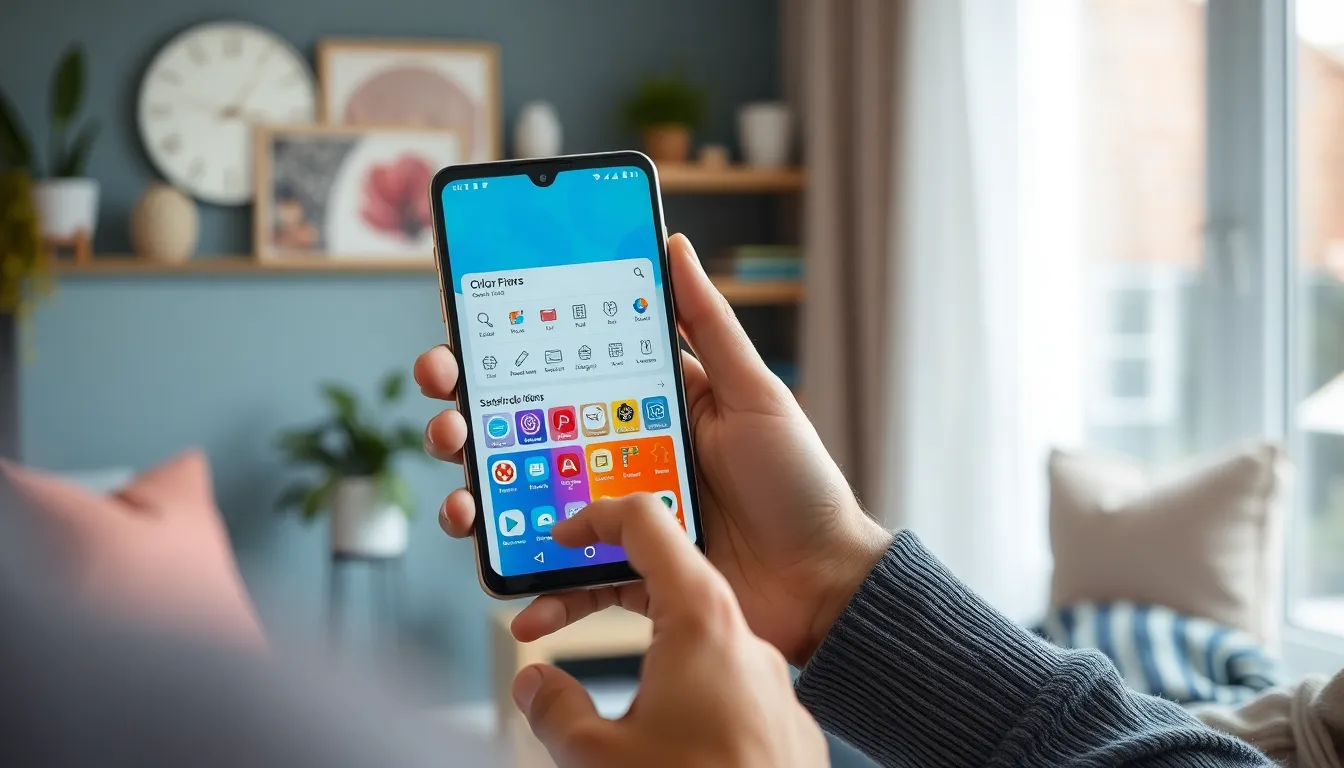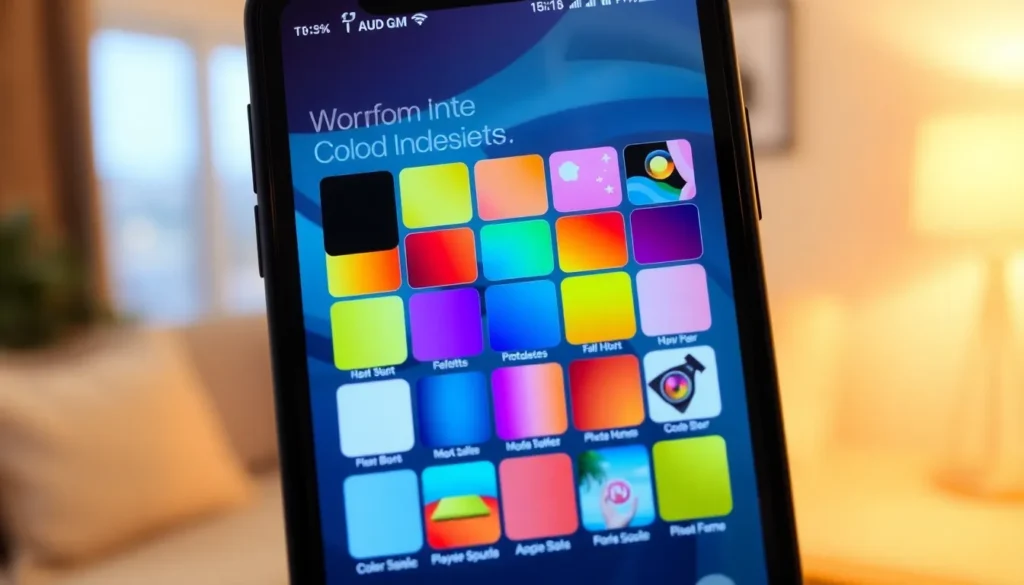Ever looked at your phone and thought, “Wow, this app color is as exciting as a bowl of plain oatmeal?” If so, you’re not alone. Many people crave a little pizzazz in their digital lives. Changing the color of your apps isn’t just about aesthetics; it’s about expressing your unique style and making your device feel like you.
How Do I Change The Color Of My Apps
Customization options allow users to change the colors of apps for aesthetic and functional reasons. Various operating systems offer different methods for adjusting app characteristics. Individual preferences play a significant role in choosing colors that resonate with personal styles.
Android users can access color settings through the device’s display options. These settings often include themes and color palettes. Dark mode is a popular choice, as it provides a sleek appearance while reducing eye strain. For additional customization, third-party applications can also provide enhanced color options.
iOS devices feature streamlined customization options. Users can select from predefined themes or create custom shortcuts with distinct color schemes. Utilizing accessibility settings allows users to modify app appearances based on their specific needs.
Some apps also allow for in-app theme settings. Users can navigate to account settings within these apps to explore available themes and colors. Changing app colors often enhances user experience and personalizes the interface.
Popular applications like social media platforms and email clients frequently provide built-in color customization. Bright or muted color schemes cater to varying aesthetic preferences. User engagement often improves when individuals can tailor these visual elements.
Many devices support advanced features; for example, widgets also allow color changes. These widgets enhance the home screen’s personalization, aligning with the overall app theme. Engaging with users through color changes creates a sense of ownership over the device.
Exploring app color customization reveals a variety of pathways to create unique digital experiences. Each customization path offers new opportunities to express individuality through color.
Changing App Colors on Android Devices

Customizing app colors on Android devices enhances user experience and personal expression. Users can easily adjust settings to match their preferences.
Accessing Theme Settings
Access theme settings through the device’s display options. Navigate to the “Settings” app, then select “Display.” Users will find “Themes” or “Dark Mode” options available. Select different themes, or enable dark mode for a sleek look. The “Color Palette” option allows for additional tweaks, like accent colors. Users can preview changes before applying them, ensuring satisfaction.
Using Third-party Applications
Explore third-party applications to expand customization options beyond native settings. Popular apps like “Nova Launcher” and “KLWP” offer extensive themes and color customization features. Users can download themes from various repositories, transforming app appearances dramatically. Installing these apps may require permissions, allowing deeper access to design elements. Advanced settings in these apps enable significant customization, providing users with unique interfaces tailored to their style.
Changing App Colors on iOS Devices
iOS devices offer several straightforward methods for customizing app colors. Users can leverage built-in features or explore specific app settings to enhance personalization.
Utilizing Built-in Features
Accessing the “Settings” app allows users to adjust color preferences easily. Under the “Display & Brightness” section, options for light and dark modes contribute to app appearance. Users can choose to enable “Smart Invert” to change color rendering for a unique look. Widgets on the home screen further enhance visibility with different color schemes, creating a tailored experience. Notifications can also reflect color choices, aligning with personal branding.
Exploring App-Specific Options
Many apps come equipped with their own color settings. Social media platforms often include options for themes or interface colors that can be adjusted directly within the app. Email clients may allow customization of background and text colors. Users should navigate to the settings menu within each app to discover tailored options. Personalization enhances user engagement and allows for a unified aesthetic across applications. Specific adjustments can make the digital environment more enjoyable and distinctive.
Tips for a Cohesive Color Palette
Choosing a cohesive color palette enhances the overall aesthetics of apps. Consider using complementary colors that work well together. Analyzing color theory can assist in making informed choices about shades and tones.
Utilizing apps like Adobe Color or Coolors can simplify the color selection process. These tools allow users to experiment with color wheels and visualize different combinations. Trying out a limited color scheme with two to five colors keeps the design clean and unified.
Applying consistent colors across various apps creates a seamless experience. Identifying primary, secondary, and accent colors can provide clear guidelines when customizing apps. Many users find it helpful to establish a base color that resonates with personal style and then build around it.
Exploring current design trends can inspire fresh ideas for color palettes. Checking popular design websites or social media platforms like Pinterest showcases trending color schemes. It’s advisable to keep accessibility in mind, ensuring high contrast between text and background colors for improved readability.
Testing colors on multiple devices helps in maintaining a cohesive look. Variations in display settings can alter the appearance of colors, influencing how they’re perceived. Regularly reviewing the overall appearance after making changes can guide further modifications, ensuring the final look aligns with the user’s vision.
Focusing on emotional responses to colors also plays a significant role. Warm colors can energize, while cool colors typically evoke calmness. Prioritizing colors that resonate positively with users will enhance their overall engagement with the apps.
Conclusion
Changing the color of apps is an exciting way to enhance personalization and express individual style. Whether using built-in settings or third-party applications, users can create a unique digital environment that reflects their preferences. By exploring various color options and considering accessibility, users can ensure their choices not only look great but also enhance usability.
With the right tools and knowledge, customizing app colors can transform a device into a personalized extension of oneself. Embracing creativity in color selection leads to a more engaging and enjoyable user experience.
